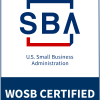As you know, Starbucks has been in the news recently because of events in one of their stores in Philadelphia where two black men were arrested for trespassing simply waiting for their meeting to begin. Responding immediately to the extremely harmful actions of their personnel, Starbucks took responsibility by choosing to provide implicit bias training to all of their employees. A recent NY Times article Starbucks to Close 8,000 U.S. Stores for Racial-Bias Training After Arrests suggests that anti-bias training can help to minimize these forms of discrimination.
Although anti-bias training is nothing new, what was interesting was that the article mentioned mindfulness as an antidote to racial bias. University of California, Berkeley researcher, Jason Okonofua was quoted in the article saying that slowing down one’s thinking “allows people to just think in a more mindful way when interacting with other people.” And in fact, the link between mindfulness and decreased implicit bias was the subject of a 2014 study by psychologists Lueke and Gibson at Central Michigan University: Mindfulness Meditation Reduces Implicit Age and Race Bias.
Leading edge research suggests that for anti-bias training to be effective, it must include:
• an understanding of how bias works on both personal and systemic levels;
• awareness of personal biases and organizational structures that perpetuate bias;
• strategies (including mindfulness) for both personal and organizational change; and
• an opportunity to practice those strategies.
These are the precise building blocks of the keynotes, workshops, and trainings I offer.
Mindfulness-based anti-bias training can minimize bias and alter behavior to build more culturally inclusive spaces. This is also the topic of my upcoming book, The Mindfulness Effect, which provides 25 mindfulness practices for healing, self-empowerment, inclusive leadership, social and environmental justice.
Virtual reality simulations are the next frontier in organizational training.
The NY Times article on Starbucks also features Mursion, a global company that creates virtual reality simulations for employees to practice the high stakes behavior change you’re looking for in a safe environment. I’ve been working with Mursion for the past year or so designing and implementing simulations that allow learners to practice the leadership skills and strategies for minimizing bias and microaggressions that I teach in my keynotes and workshops. The more practice we get in these often-challenging situations, the more confidence we build, and the more likely we will be to challenge bias and microaggressions in real-life social situations.
Starbucks’ anti-bias training is a positive first step in challenging the ways bias manifests and gets perpetuated in everyday situations – causing inconceivable hardships (and sometimes death) to people with traditionally marginalized identities. More businesses are following suit.
Are you ready to take your organization to the next level in diversity, equity, and inclusion education?
For more info, and to see a full list of services, please check out my newly redesigned website at www.denasamuels.com, and “Follow” Dena Samuels Consulting on Facebook for my latest blogs, resources, and learning!

